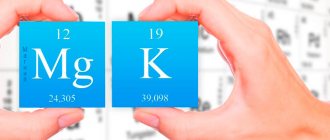Pharmacological properties of the drug Sirdalud
Pharmacodynamics. Tizanidine is a centrally acting skeletal muscle relaxant. The anatomical structure that is the main point of application of its action is the spinal cord. By stimulating presynaptic α2 receptors, it inhibits the release of excitatory amino acids that stimulate N-methyl-D-aspartate receptors (NMDA receptors). As a result, polysynaptic transmission of excitation is suppressed at the level of interneurons of the spinal cord. Since it is this mechanism that is responsible for excess muscle tone, when it is suppressed it decreases. In addition to muscle relaxant properties, tizanidine also exhibits a moderate central analgesic effect. Sirdalud is effective both for acute painful muscle spasms and for chronic spasticity of spinal and cerebral origin. It reduces resistance to passive movements, reduces spasms and clonic convulsions, and increases the strength of voluntary contractions of skeletal muscles. Pharmacokinetics. Tizanidine is absorbed quickly and almost completely. The maximum concentration in blood plasma is reached approximately 1 hour after taking the drug. Due to extensive first-pass metabolism in the liver, the average bioavailability is approximately 34%. Plasma protein binding is 30%. In the dose range from 4 to 20 mg, the pharmacokinetics of tizanidine is linear. Considering the low interindividual variability of pharmacokinetic parameters (Cmax in blood plasma and AUC), when taking tizanidine orally, it is possible to predict the value of its concentration in blood plasma. Gender does not affect the pharmacokinetic parameters of tizanidine. Tizanidine is rapidly and extensively metabolized in the liver. Metabolites are inactive. The average half-life of tizanidine from the systemic circulation is 2–4 hours. It is excreted primarily by the kidneys (approximately 70% of the dose) in the form of metabolites; unchanged - about 2.7%. Features of pharmacokinetics in certain groups of patients. It was found that in patients with renal failure (creatinine clearance ≤25 ml/min), the average level of maximum plasma concentration was 2 times higher than that in healthy volunteers, and the terminal half-life increased to approximately 14 hours, resulting in an increase in AUC by on average 6 times. The influence of food. Concomitant food intake does not affect the pharmacokinetics of tizanidine. Although the maximum plasma concentration increases by 1/3, this is considered to be clinically insignificant. No significant effect on absorption was noted.
Price for Sirdalud
The cost of Sirdalud 2 mg tablets is about 200 rubles, 4 mg packages are about 300 rubles.
The price of tablets in Ukraine for 2 mg is about 250 UAH, for 4 mg is about 350 UAH.
- Online pharmacies in RussiaRussia
- Online pharmacies in UkraineUkraine
- Online pharmacies in KazakhstanKazakhstan
ZdravCity
- Sirdalud tablets 4 mg 30 pcs. Novartis Urunleri
RUB 288 order - Sirdalud tablets 2 mg 30 pcs. Novartis Urunleri
RUB 195 order
- Sirdalud mr caps. with mod. release 6mg n30Novartis Saglik Gida ve Tarim Yurunleri Sanayi ve Ticaret A.S.
RUR 513 order
Pharmacy Dialogue
- Sirdalud MR (caps. 6 mg No. 30)Novartis
RUR 484 order
- Sirdalud MR (caps. 6 mg No. 30)Novartis Saglik Gida te Tarim Sanayi ve Ticaret A.
490 rub. order
- Sirdalud (tab. 2 mg No. 30)Novartis
RUB 197 order
- Sirdalud (tab. 4 mg No. 30)Novartis
RUB 287 order
show more
Pharmacy24
- Sirdalud 4 mg No. 30 tablets Novartis Urunleri, Turkey
358 UAH.order - Sirdalud 2 mg No. 30 tablets Novartis Pharma S.p.A./Novartis Saglik, Gida ve Tarim Urunleri San.Ve Tik. A.S., Italy/Tureccia
245 UAH order
PaniPharmacy
- Sirdalud tablets Sirdalud tablets. 2mg No. 30 Türkiye, Novartis Urunleri
254 UAH order
- Sirdalud tablets Sirdalud tablets. 4mg No. 30 Türkiye, Novartis Urunleri
359 UAH. order
show more
Indications for use of the drug Sirdalud
Painful muscle spasm:
- associated with static and functional diseases of the spine (cervical and lumbar syndromes);
- after surgery, for example for a herniated disc or osteoarthritis of the hip joint.
Skeletal muscle spasm in neurological diseases, such as multiple sclerosis, chronic myelopathy, degenerative diseases of the spinal cord, cerebrovascular accidents and cerebral palsy.
Use of the drug Sirdalud
For painful muscle spasms, the drug is prescribed 2 or 4 mg 3 times a day. In severe cases, an additional 2 or 4 mg may be taken before bedtime. For skeletal muscle spasms caused by neurological diseases, the dose should be selected individually. The initial daily dose should not exceed 6 mg in 3 divided doses. The dose can be increased gradually by 2-4 mg at intervals of 3-4 to 7 days. Typically, the optimal therapeutic effect is achieved with a daily dose of 12 to 24 mg, divided into 3 or 4 doses at equal intervals. The dose should not exceed 36 mg/day. The duration of treatment depends on the course of the disease and the patient’s condition. Elderly patients. Application experience is limited. Based on pharmacokinetic data, it can be assumed that in some cases, renal clearance in patients of this age category may be significantly reduced. In this regard, caution should be exercised when using Sirdalud in elderly patients. It is recommended to start with a dose of 2 mg once a day. The dose is increased gradually, taking into account tolerability and effectiveness (see SPECIAL INSTRUCTIONS).
Reviews for Sirdalud
Reviews of Sirdalud tablets are left by patients of different ages. The average rating on the forums for this medicine is 3.9 points out of 5. Many patients note the occurrence of side effects such as drowsiness and fatigue. There are also reports of the drug's effect on the liver.
Reviews from doctors about Sirdalud: the drug is used for symptomatic treatment, it helps reduce spasms of the skeletal muscles. If side effects are severe or there is no result after 3 days of taking the medication, you must contact your doctor to adjust the treatment regimen.
Side effects of the drug Sirdalud
The following adverse reactions are distributed according to frequency of occurrence: very often (≥1/10), often (≥1/100, ≤1/10), infrequently (≥1/1000, ≤1/100), rarely (≥1/10 000, ≤1/1000), very rare (≤1/10,000), including isolated messages. Mental disorders: rarely - hallucinations, insomnia, sleep disturbance. From the side of the central nervous system: often - drowsiness, dizziness. From the cardiovascular system: often - bradycardia, arterial hypotension. From the gastrointestinal tract: often - dry mouth; rarely - gastrointestinal disorders, nausea. Hepatobiliary disorders: very rarely - hepatitis, liver failure. From the musculoskeletal system: rarely - muscle weakness. General disorders: weakness. When taking the drug in low doses recommended for relieving painful muscle spasms, side effects are rare, usually mild and transient. Drowsiness, weakness, dizziness, dry mouth, decreased blood pressure, gastrointestinal disorders and increased transaminase activity have been reported. When taking the drug in higher doses recommended for the treatment of spasticity, the above-mentioned side effects occur more often and are more pronounced, but they are rarely severe enough to stop treatment.
Side effects
Side effects of Sirdalud include:
- dizziness , drowsiness , sleep disturbances , insomnia ;
- bradycardia , decreased blood pressure;
- stomach upsets , nausea , dry mouth ;
- increased fatigue, muscle weakness ;
- increased activity of liver transaminases.
As a result of abrupt cessation of taking Sirdalud after a long period of treatment, tachycardia and increased blood pressure may develop, which can lead to impaired blood circulation in the brain, so the dose of the drug should be reduced gradually, until it is completely discontinued.
As a result of clinical studies, the following adverse events were identified, the frequency of which was not identified:
- confusion , hallucinations , vertigo ;
- blurred vision;
- liver failure , hepatitis ;
- withdrawal syndrome , asthenia .
Special instructions for the use of the drug Sirdalud
Liver failure. Cases of liver dysfunction associated with tizanidine have been reported, but such cases have been rare at daily doses up to 12 mg. In this regard, it is recommended to monitor liver function tests once a month in the first 4 months of treatment in those patients who are prescribed tizanidine at a daily dose of ≥12 mg, as well as in cases where clinical signs suggestive of impaired liver function are noted - such as unexplained nausea, anorexia, fatigue. In cases where the levels of ALT and AST in the blood serum persistently exceed the upper limit of normal by 3 times or more, the use of Sirdalud should be discontinued. Kidney failure. Treatment of patients with renal failure (creatinine clearance ≤25 ml/min) is recommended to begin with a dose of 2 mg 1 time per day. The dose is increased gradually, taking into account tolerability and effectiveness. If it is necessary to obtain a more pronounced effect, it is recommended to first increase the dose prescribed once a day, after which the frequency of administration is increased. After sudden drug withdrawal or rapid dose reduction, increased blood pressure, tachycardia, and other cerebrovascular disorders may occur. After prolonged use of the drug Sirdalud (especially in high doses), in order to avoid withdrawal syndrome, it is necessary to gradually reduce the dosage to stop treatment. Sirdalud contains lactose and is not recommended for patients with rare hereditary diseases - galactose intolerance, severe lactase deficiency or glucose-galactose malabsorption syndrome. The use of the drug Sirdalud may cause prolongation of the QT , especially in the case of simultaneous use of the drug with drugs that prolong the QT . Children. Experience with the drug in children is limited, so its use in children is not recommended. During pregnancy and breastfeeding. No teratogenic effects were detected when tizanidine was used in rats and rabbits. Since no controlled studies have been conducted on the use of tizanidine in women during pregnancy, it should not be used during this period, unless the potential benefit to the mother outweighs the possible risk to the fetus. In animal studies, tizanidine has been shown to pass into breast milk in small amounts; however, it should not be used during breastfeeding. Impact on the ability to drive vehicles and operate machinery. Patients who experience drowsiness should be advised to refrain from work that requires high concentration and reaction speed.
Interactions of the drug Sirdalud
Concomitant use of tizanidine with fluvoxamine or ciprofloxacin, a CYP1A2 inhibitor, is contraindicated. The combined use of tizanidine with fluvoxamine or ciprofloxacin increases the AUC of tizanidine by 33 and 10 times, respectively. Hypotension is likely to occur along with drowsiness, dizziness, and decreased psychomotor activity. Caution is necessary when using tizanidine with other CYP1A2 inhibitors, such as antiarrhythmic drugs (amiodarone, mexiletine, propafenone), cimetidine, fluoroquinolones (enoxacin, pefloxacin, ciprofloxacin, norfloxacin), rofecoxib, oral contraceptives and ticlopidine. Concomitant administration of Sirdalud with antihypertensive drugs, including diuretics, can sometimes cause arterial hypotension and bradycardia. Alcohol or sedatives may increase the sedative effect of the drug. An increase in the level of tizanidine in the blood plasma can cause an overdose symptom such as prolongation of the QT .
Overdose of the drug Sirdalud, symptoms and treatment
Several reports of overdose with Sirdalud have been received, including a case where the dose taken reached 400 mg. In all cases, recovery was uneventful. Symptoms: nausea, vomiting, hypotension, dizziness, drowsiness, miosis, anxiety, respiratory failure, coma. Treatment. To remove the drug from the body, repeated administration of activated carbon is recommended. Forced diuresis. In the future - symptomatic treatment.
Overdose of Sirdalud
If the patient was unjustifiably prescribed the maximum dose of the drug, or he independently increased the number of doses, the following adverse reactions caused by an overdose may be observed:
- vomit;
- drowsiness;
- loss of coordination;
- dizziness;
- decrease in systolic pressure;
- miosis;
- respiratory rhythm disturbances.
Significantly exceeding the maximum permissible daily dosage can put the patient into a coma.







